Never before has the Navajo Nation allowed a film crew into the magnificent red gorge known as Canyon del Muerto. On tribal land in northeast Arizona, it’s part of Canyon de Chelly National Monument—a place of the highest spiritual and historical significance for the Diné, as the Navajo call themselves. Coerte Voorhees, the writer and director of the film being shot on location here, describes the interlinked canyons as “the heart of the Navajo Nation.”
The movie, an archaeological epic titled Canyon Del Muerto with an expected release date later this year, recounts the true story of Ann Axtell Morris, a pioneering archaeologist who worked here during the 1920s and early ’30s. She was married to Earl Morris, sometimes described as the father of Southwest archaeology and often cited as a model for the fictional Indiana Jones, portrayed by Harrison Ford in the blockbuster Steven Spielberg and George Lucas movies. The acclaim that attached itself to Earl Morris, combined with prejudice against women in the discipline, has long obscured her achievements, though she was one of the first female field archaeologists in America.
On a cold clear morning, as the sun begins to illuminate the towering canyon walls, a procession of horses and four-wheel-drive vehicles wends its way along the sandy canyon floor. Most of the 35-person film crew are riding in open-topped Jeeps driven by local Navajo guides, who point out rock art and cliff dwellings made by the Anasazi, or Ancestral Puebloans as archaeologists now call them, the ancients who lived here before the Navajo and departed under mysterious circumstances in the early 14th century. Bringing up the rear of the convoy, and frequently bogging down in the sand, are a 1917 Model T Ford and a 1918 Model TT truck.
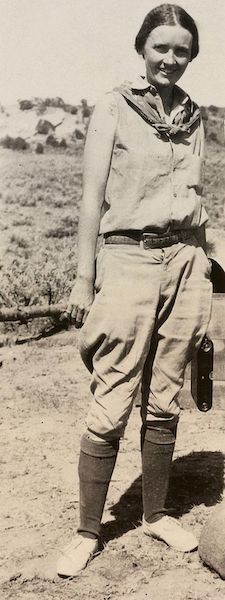
University of Colorado Museum of Natural History
As the cameras set up for the first wide shots in the canyon, I make my way over to Ann and Earl’s 58-year-old grandson, Ben Gell, the production’s senior script adviser. “This was Ann’s special place, where she was happiest and did some of her most important work,” says Gell. “She came back to the canyon many times and wrote that it never looked the same twice. There were always variations in light, season, weather. My mother was actually conceived here on an archaeological dig, and, perhaps unsurprisingly, grew up to be an archaeologist herself.”
A scene plays out, and together we watch a young woman canter past the cameras on a white mare, wearing a sheepskin-lined brown leather jacket, with her hair pulled back in a knot. The actress portraying his grandmother in this scene is Kristina Krell, a stunt double, and to Gell, it’s like watching an old family photograph come to life. “I didn’t know Ann or Earl, they both died before I was born, but I’m realizing how much I love them,” says Gell. “They were amazing people and they had good hearts.”
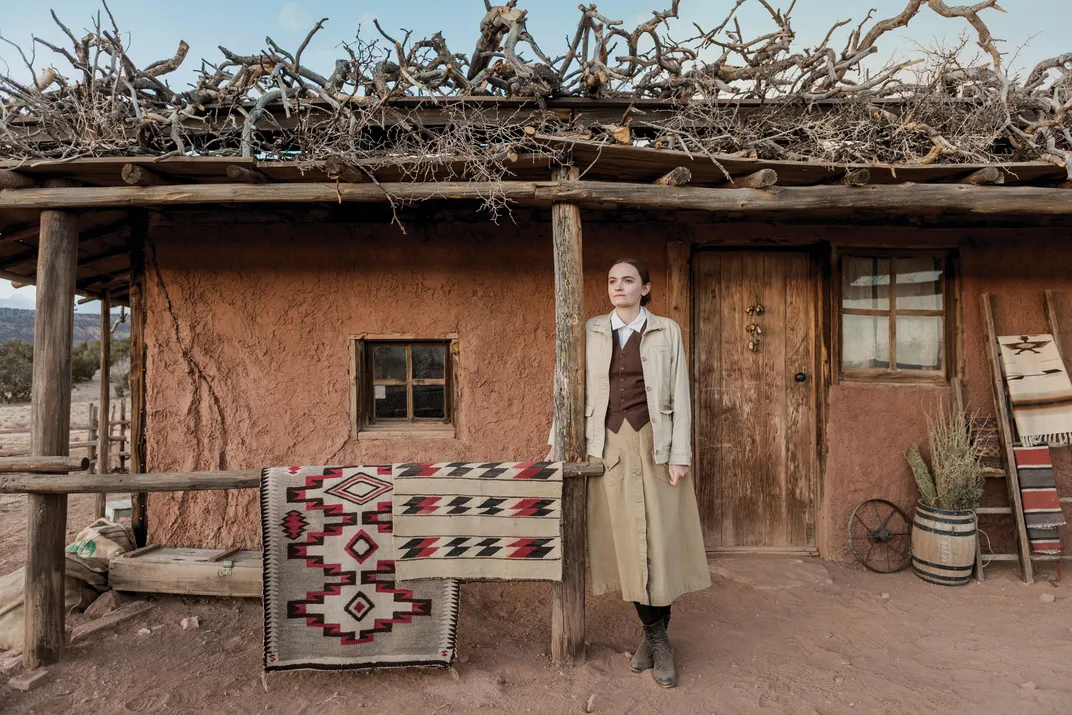
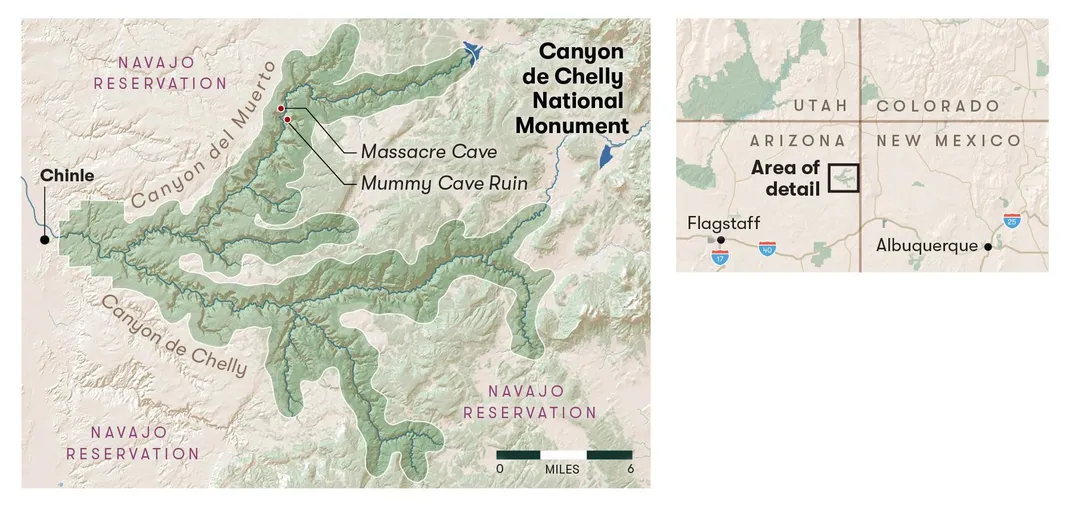
Also observing the shoot is John Tsosie, who is Diné, from the nearby town of Chinle, Arizona. He is the liaison between the film production and the tribal government. I ask him why the Diné agreed to allow these filmmakers into Canyon del Muerto. “We’ve had some bad experiences in the past with film productions on our lands,” he says. “They came in with hundreds of people, left their trash, disturbed sacred sites, and acted like they owned the place. It’s the opposite with this production. They’re very respectful of our land and people. They’ve hired quite a few Navajos, put money into local businesses and helped our economy.”
Gell adds, “It was the same with Ann and Earl. They were the first archaeologists to hire Navajos on digs, and they paid decently. Earl spoke Navajo and Ann spoke some too. Later, when Earl was advocating for these canyons to be protected, he said that the Navajo living here should be allowed to stay, because they were an essential part of the place.”
That argument prevailed. Today approximately 80 Diné families live in Canyon del Muerto and Canyon de Chelly within the national monument’s borders. Some of the drivers and horse wranglers working on the movie belong to those families and are descended from people that Ann and Earl Morris knew almost 100 years ago. In the movie, Ann and Earl’s Navajo assistants are portrayed by Diné actors speaking Navajo with English subtitles. “Normally,” says Tsosie, “filmmakers don’t care which tribe Native American actors belong to, or what language they speak.”
Sheldon Blackhorse, a stocky, ponytailed 40-year-old Navajo language adviser on the film, launches a YouTube clip on his smartphone—a scene from the 1964 western A Distant Trumpet. A Navajo actor, costumed as a Plains Indian, is speaking in Navajo to a U.S. Cavalry officer. The filmmakers didn’t realize that the actor was amusing himself and other Navajos. “Obviously you can’t do anything to me,” he says. “You’re a snake crawling through your own s---.”
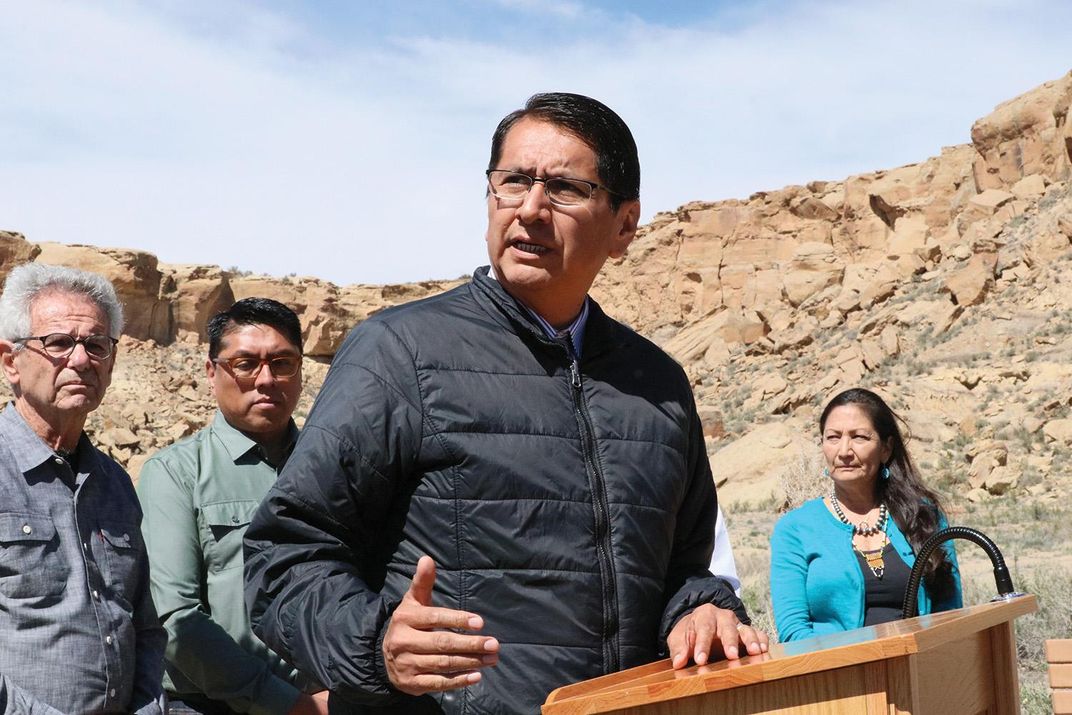
In Canyon Del Muerto, Navajo actors speak a period-appropriate 1920s version of the language. Sheldon’s father, Taft Blackhorse, a linguistic, cultural and archaeological adviser on the set that day, explains: “We’ve had another century of exposure to Anglo culture since Ann Morris was here, and our language has become more blunt and direct like English. Archaic Navajo is more descriptive in terms of landscape. They would say, ‘walk above the living rock.’ Now we say, ‘walk on the rock.’ This movie will preserve that older way of speaking, which has almost died out.’’
* * *
The procession moves up the canyon. The crew unpacks the cameras, mounting them on high tripods, getting ready for the Model Ts to arrive. The sky is azure, the canyon walls red ocher, the cottonwoods leafed out bright green. Voorhees, a slim 30-year-old with curly brown hair and aquiline features, is wearing shorts, a T-shirt and a wide-brimmed straw hat. He paces back and forth in the sand. “I can’t believe we’re actually here,” he says.
This is the culmination of years of effort as writer, director, producer and entrepreneur. Voorhees, with help from his brother John and his parents, raised the multi-million production budget from more than 75 individual equity investors, one sale at a time. Then came the Covid-19 pandemic, which delayed the entire project and required Voorhees to raise an extra $1 million just to cover the cost of the personal protective equipment—masks, disposable gloves, hand sanitizer, and so forth—needed to safeguard dozens of cast and crew on all the sets over a 34-day shooting schedule.
Voorhees has consulted with more than 30 archaeologists to ensure accuracy and cultural sensitivity. He has made 22 scouting trips into Canyon de Chelly and Canyon del Muerto to find the best locations and camera angles. He has had meetings over several years with the Navajo Nation and the National Park Service, who jointly manage Canyon de Chelly National Monument.
Voorhees grew up in Boulder, Colorado, where his father is a lawyer. For most of his boyhood, inspired by the Indiana Jones movies, he wanted to be an archaeologist. Then he got interested in filmmaking. At age 12, he began volunteering at the museum on the campus of the University of Colorado, Earl Morris’ alma mater and the sponsor of some of his research expeditions. One picture at the museum seized young Voorhees’ attention. “It was a black-and-white photograph of Earl Morris in Canyon de Chelly, looking like Indiana Jones in this incredible landscape, and I thought, ‘Wow, I want to make a movie about that guy.’ Then I found out he was the prototype for Indiana Jones, or might have been, and I was totally hooked.”
Lucas and Spielberg have said the Indiana Jones character is based on a type common in the serial films of the 1930s—a “soldier of fortune in a leather jacket and that type of hat,” as Lucas put it—rather than any one historical individual. In other statements, though, they’ve acknowledged being partly inspired by two real-life models: the debonair, champagne-sipping archaeologist Sylvanus Morley, who oversaw research at Chichén Itzá, the great Mayan temple complex in Mexico, and Morley’s director of excavations—Earl Morris, who wore a fedora hat and brown leather jacket, and combined a rugged adventurous spirit with a rigorous scholarly intellect.
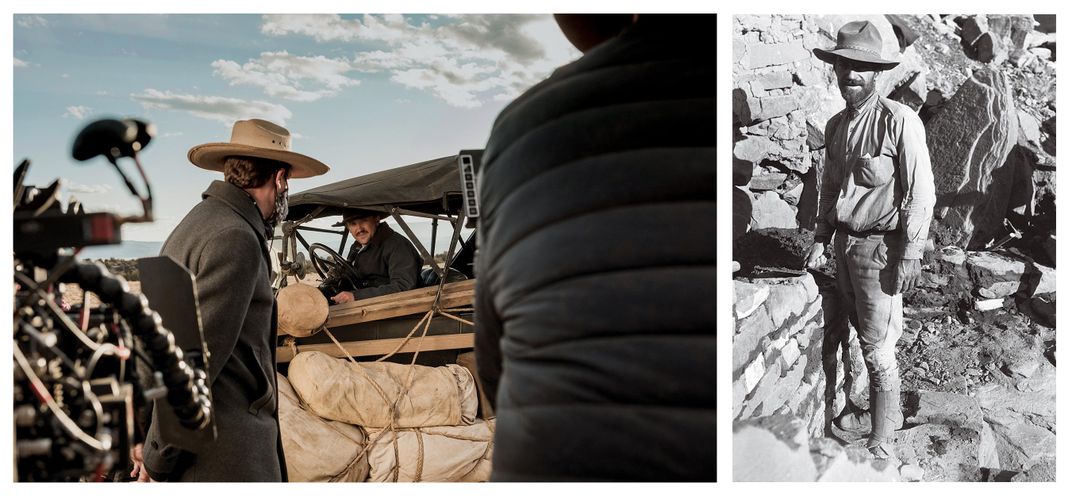
The desire to make a film about Earl Morris stayed with Voorhees through high school and Georgetown University, where he studied history and classics, and the University of Southern California Graduate Film School. After making his debut feature—The First Line, a drama based on the courtroom battles over the Elgin Marbles, released by Netflix in 2016—he turned in earnest to the subject of Earl Morris.
Voorhees’ touchstone texts soon became two books written by Ann Morris: Digging in Yucatan (1931), which covers the time she and Earl spent at Chichén Itzá, and Digging in the Southwest (1933), about their experiences in the Four Corners region and Canyon del Muerto in particular. In those lively, autobiographical works—marketed to older children because publishers didn’t accept that a woman could write a book about archaeology for adults—Morris defined the profession as “a rescue expedition sent into the far places of the earth to recover the scattered pages of man’s autobiography.” After immersing himself in her writing, Voorhees decided to focus on Ann. “It was her voice in those books. I started developing the screenplay.”
That voice is informative and authoritative, yet also jaunty and good-humored. Of her love for the remote canyon landscape, she wrote in Digging in the Southwest, “I admit that I am one of the innumerable victims of an acute Southwestern hypnosis—a disease which is chronic, virulent, and incurable.”
In Digging in Yucatan, she describes the archaeologist’s three “absolutely necessary tools,” which are the spade, the human eye, and imagination—the most important of all and most easily abused. “It must be carefully controlled by such facts as are available, while remaining fluid enough to shift and conform as new facts are brought to light. It must be governed by stern logic and good common sense, and...measured out with the care of a chemist who compounds a life-giving drug.”
Without imagination, she writes, the relics that archaeologists dig up are “nothing but dry bones and variegated dust.” Imagination enables them “to rebuild the walls of fallen cities...visualize great trade roads stretching across the world, filled with curious travelers, greedy merchants and soldiers setting forth to great victories or defeats now completely forgotten.”
When Voorhees asked about Ann at the University of Colorado in Boulder, where most of Earl’s papers are housed, he often heard the same response—in so many words, Why would anyone care about Earl Morris’ drunk wife? Though Ann did become a severe alcoholic late in life, the brutally dismissive question also reveals the extent to which the career of Ann Morris has been forgotten, neglected or perhaps even erased.
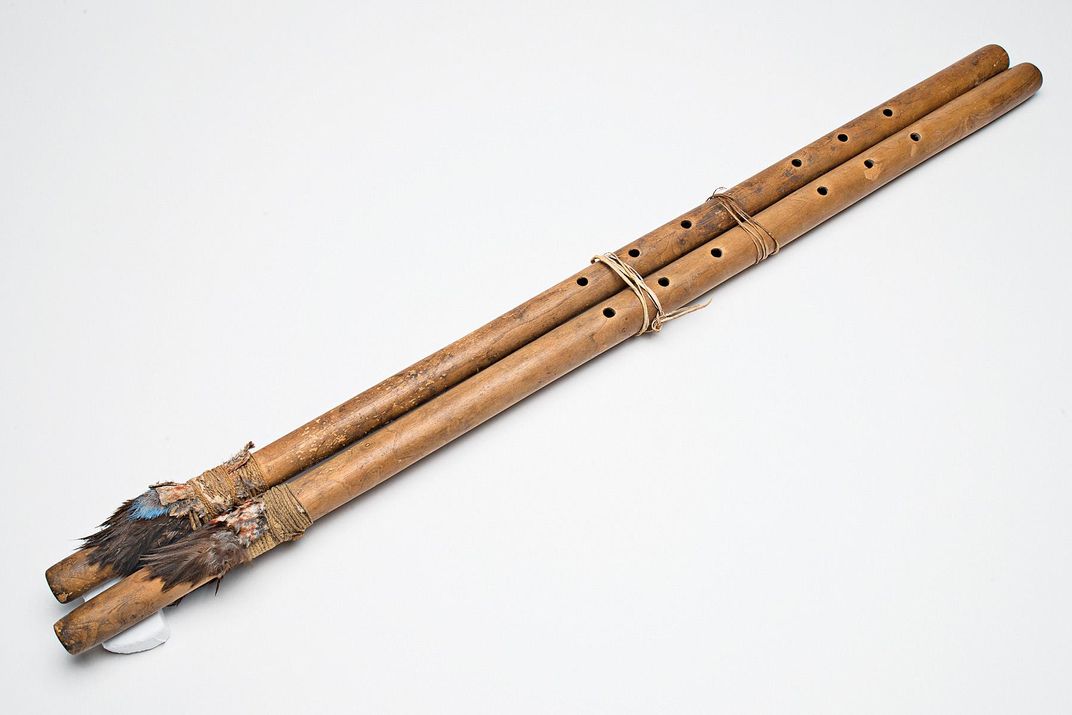
Inga Calvin, a professor of anthropology at the University of Colorado, has been working on a book about Ann Morris, largely based on her correspondence. “She was really a good archaeologist, with a college degree and field training in France, but she wasn’t taken seriously because she was a woman,” she says. “It didn’t help that she was a young, pretty, vivacious woman who loved to make people happy. Nor did it help that she was popularizing archaeology through her books. Popularizers are looked at with scorn by serious academic archaeologists. It was girl stuff to them.”
Calvin views Morris as “underappreciated and pretty damn remarkable.” The way that Ann dressed in the field—striding around in jodhpurs, gaiters and men’s clothes—was radical for a woman in the early 1920s. “So was wielding a trowel and sleeping in a camp full of men, including Native American men, in extremely remote places,” she says.
In the judgment of Mary Ann Levine, a professor of anthropology at Franklin & Marshall College in Pennsylvania who has written extensively about early women archaeologists, Morris was a “trailblazer who colonized an unoccupied space.” With the academic research path blocked by institutional sexism, she found a niche working in a career couple with Earl, writing large sections of his technical reports, helping him to interpret their findings, and authoring successful books. “She introduced the avid public, including young women, to the methods and objectives of archaeology,” says Levine. “In telling her own story, she wrote herself into the history of American archaeology.”
* * *
When Ann arrived at Chichén Itzá in the Yucatán, in 1924, she was told by Sylvanus Morley to baby-sit his 6-year-old daughter and act as hostess to visiting guests. Avoiding those duties and exploring the site, she discovered a small temple that had been overlooked, and she persuaded Morley to let her excavate it, which she did with meticulous care. While Earl was restoring the spectacular Temple of the Warriors (A.D. 800-1050), Ann, a skilled painter, was copying and studying its wall art. Her research and illustrations were essential components of the two-volume Temple of the Warriors at Chichen Itza, Yucatan, published by the Carnegie Institution in 1931, and she was credited as a co-author, along with Earl and a French painter, Jean Charlot.
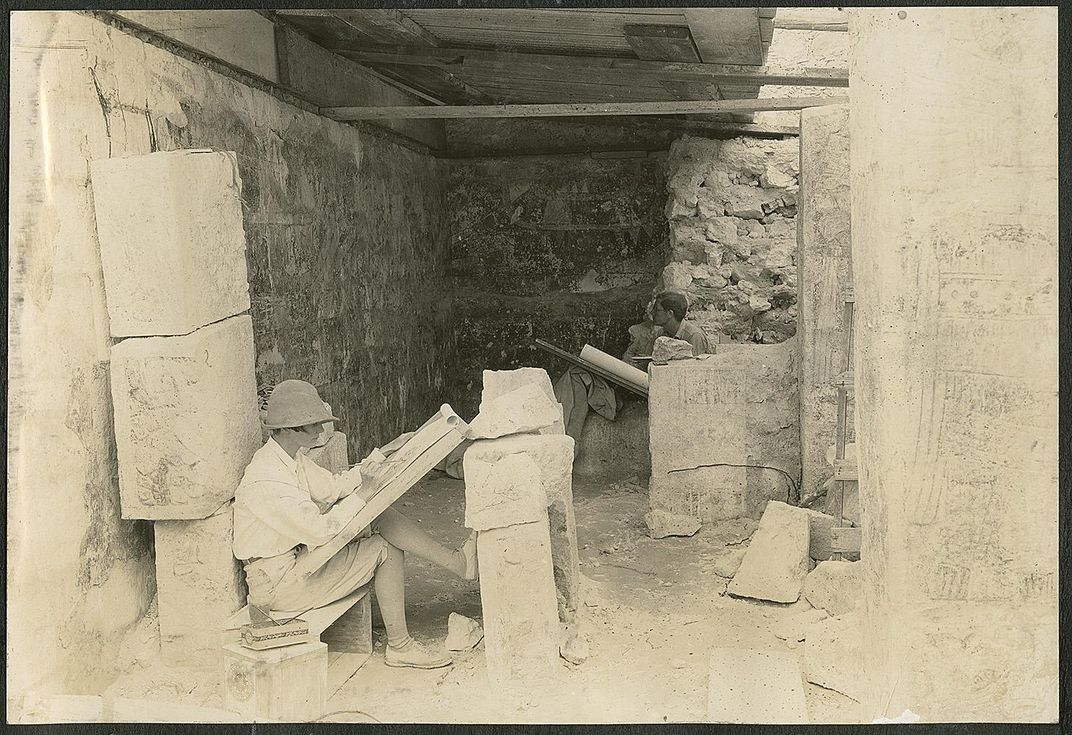
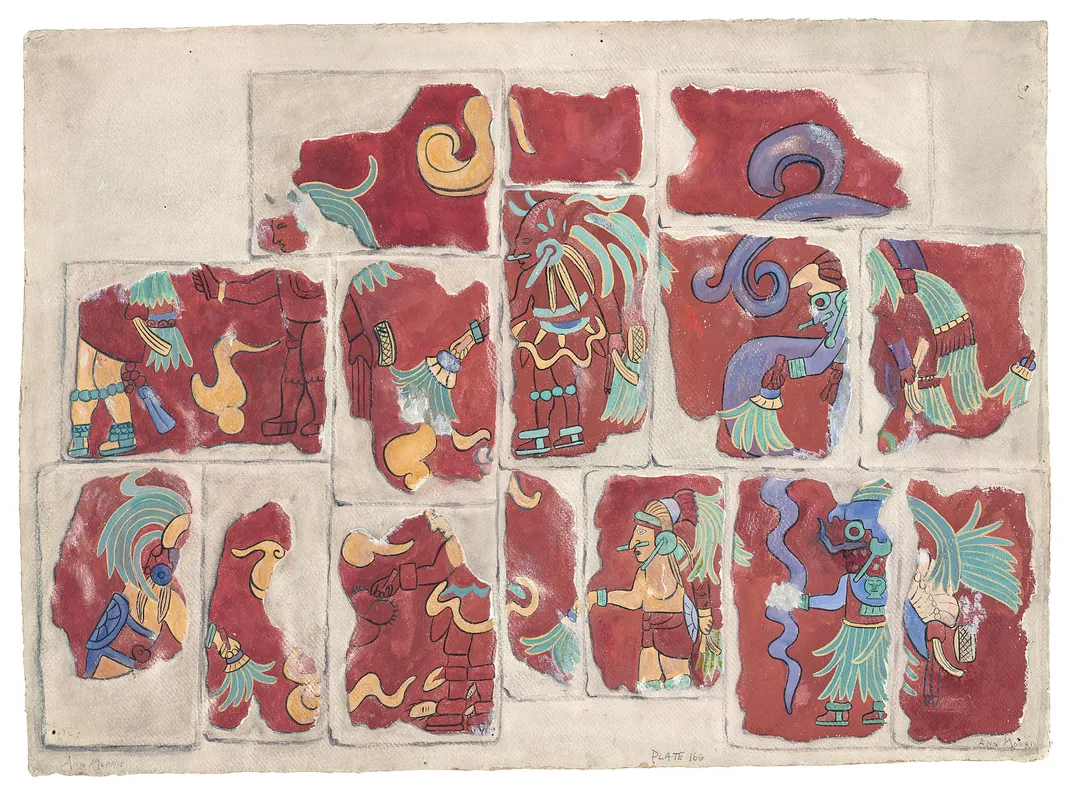
In the American Southwest, Ann conducted extensive excavations alongside Earl, and recorded and studied rock art all over the Four Corners region. Her book about those efforts upended the conventional view of the Anasazi. As Voorhees says, “People thought it had always been nomadic hunter-gatherers in this part of the country. The Anasazi weren’t recognized as having a civilization, with cities, and culture, and civil centers. What Ann Morris did in that book was very elaborately break down and identify all the individual periods of that 1,000-year civilization—Basketmaker 1,2,3,4; Pueblo 3,4, etc.”
Voorhees sees her as a 21st-century woman stranded in the early 20th century. “She was ignored, patronized, mocked and deliberately thwarted during her lifetime, because archaeology was a boys’ club,” he says. “The classic example is her books. They’re obviously written for adults with college degrees, but they had to be published as children’s books.”
Voorhees landed Tom Felton, best known for his role as Draco Malfoy in the Harry Potter films, to play Earl Morris. As Ann Morris, the filmmakers cast Abigail Lawrie, the 24-year-old Scottish-born actress, known for the British television crime drama series “Tin Star,” who bears a striking physical resemblance to the young archaeologist. “It’s like we reincarnated Ann,” Voorhees says. “Wait till you meet her, it’s really kind of unbelievable.”
* * *
On the third day in the canyon, Voorhees and the crew reach an area where Ann had slipped and nearly died while climbing on the rocks, and where she and Earl made some of their most dramatic finds—as pioneering archaeologists who entered a place called Massacre Cave, high up near the canyon rim and invisible from below.
Violent raiding, counter-raiding and warfare were endemic between the Navajo and the Spanish in New Mexico in the 18th and 19th centuries. In 1805, Spanish soldiers rode into the canyon to avenge a recent Navajo incursion. Approximately 25 Navajos—elderly, women and children—hid in the cave. They would have remained concealed if an old woman hadn’t started taunting the soldiers, calling out that they were “men who walked without eyes.”
The Spanish soldiers weren’t able to shoot directly at their targets, but their bullets ricocheted off cave walls and wounded or killed most of the people inside. The soldiers then climbed up to the cave, slaughtered the wounded and stole possessions. Nearly 120 years later, Ann and Earl Morris entered the cave and found whitened skeletons, the bullets that killed the Navajos, and pockmarks all over the back wall. The massacre gave Canyon del Muerto its sinister name. (James Stevenson, the Smithsonian Institution geologist, led an 1882 expedition here and named the canyon.)
Taft Blackhorse says, “We have a very strong taboo about the dead. We don’t talk about them, we don’t like to be in places where people died, oftentimes people will abandon a house if someone died in it. The spirits of the dead can harm the living, so our people stayed well away from Massacre Cave and the cliff dwellings too.” The Navajo death taboo may be one reason Canyon del Muerto had remained largely untouched until Ann and Earl Morris arrived. She described it without exaggeration as “one of the richest archaeological localities in the world.”
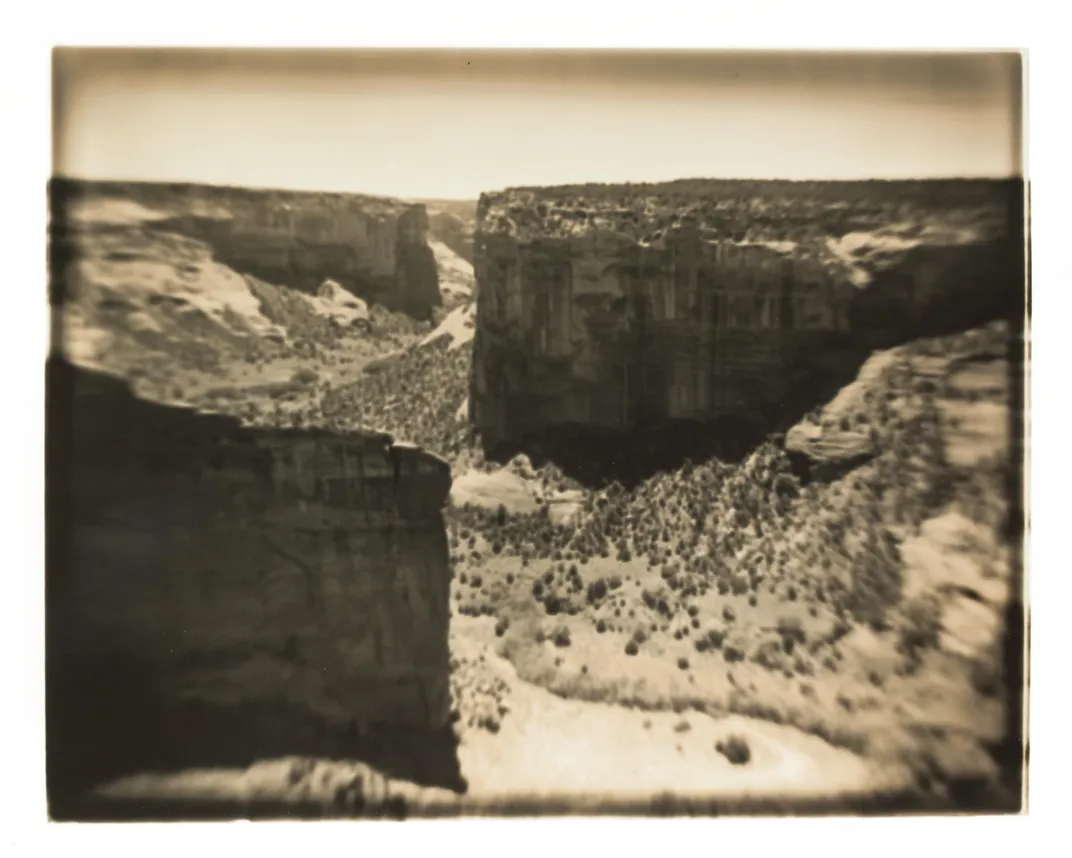
A short distance from Massacre Cave is a spectacularly beautiful place known as Mummy Cave: This is the location that Voorhees is most excited to bring to the screen for the first time. It’s a double cavern of wind-hollowed red sandstone. On one side, 200 feet above the canyon floor, is a stunning three-story tower with several adjoining rooms, all built of masonry by the Anasazi, or Ancestral Puebloans.
Excavating here in 1923, Ann and Earl Morris found evidence of 1,000 years of occupation, including numerous mummified corpses with hair and skin still intact. Almost every mummy—man, woman and child—was wearing shell and bead jewelry; so was a pet eagle that had been ceremonially buried.
One of Ann’s tasks was to brush the filth of centuries from the mummies and shoo nesting mice from their abdominal cavities. She was not squeamish in the slightest. Ann and Earl had just married, and this was their honeymoon.
* * *
At Ben Gell’s small adobe house in Tucson, amid the clutter of Southwestern artifacts and vintage Danish hi-fi equipment, is a large collection of his grandmother’s letters, diaries, photographs and mementos. From the bedroom he produces the revolver that the Morrises took along on expeditions and that Earl Morris, at age 15, had pointed at the man who had murdered his father after an altercation in a Farmington, New Mexico, saloon. “Earl’s hands were shaking so bad he could hardly hold the pistol,” says Gell. “When he pulled the trigger, the gun misfired, and he panicked and ran.”
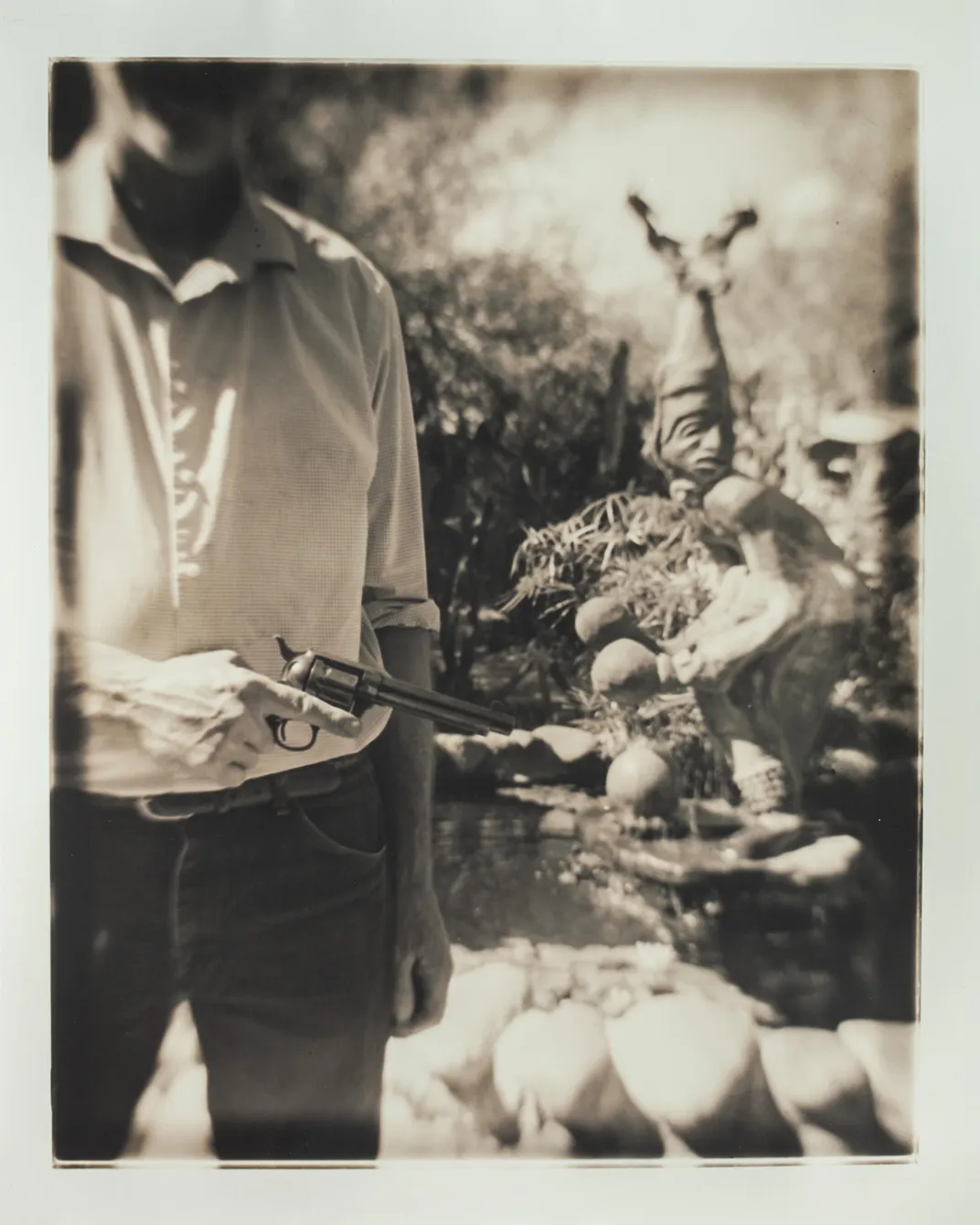
Earl was born in 1889 in Chama, New Mexico Territory. He grew up working with his father, a teamster and construction engineer, on road-grading, dam-building, mining and railroad projects. In their spare time, father and son hunted for Native American relics; using a shortened pick, Earl unearthed his first pot at the age of 31/2. After his father’s murder, digging for artifacts became a kind of obsessional therapy for Earl. In 1908, he entered the University of Colorado in Boulder, where he got his master’s degree in psychology but became fascinated by archaeology—digging not just for pots and treasure, but knowledge and understanding of the past. In 1912, he excavated a Mayan site in Guatemala, and in 1917, at age 28, he began the excavation and restoration of Aztec Ruins, an Ancestral Puebloan site in New Mexico, for the American Museum of Natural History.
Ann was born in 1900 and grew up in a well-to-do family in Omaha. At the age of 6, as she relates in Digging in the Southwest, a family friend asked what she wanted to be when she grew up. Prim and precocious, as she describes herself, she gave a well-rehearsed answer that was an accurate prophecy of her adult life: “I want to dig for buried treasure, and explore among the Indians, and paint pictures, and wear a gun, and go to college.”
Gell has been reading through the letters that Ann wrote to her mother from Smith College, in Northampton, Massachusetts. “One of the professors said she was the smartest girl at Smith,” Gell tells me. “She was the life of the party with a great sense of humor, and perhaps hiding behind that. She uses humor constantly in her letters and tells her mother about everything, including days when she’s unable to get out of bed. Depressed? Hungover? Possibly both, we really don’t know.”
Ann was fascinated by early mankind, ancient history, and Native American societies before the European conquests. She complained to her history professors that all their courses started too late, with civilizations and governments already established. “Not until one of my harassed professors remarked wearily that what I probably wanted was archaeology and not history, did the light dawn,” she wrote. Upon graduating from Smith in 1922, she sailed directly to France to join the American School of Prehistoric Archaeology, where she received her training in field excavation.
Though she had previously met Earl Morris in Shiprock, New Mexico—she was visiting a cousin—the chronology of the courtship is slightly unclear. But it appears Earl sent a letter proposing marriage to Ann while she was studying in France. “He was totally smitten with her,” says Gell. “And she married her hero. It was also a way for her to be an archaeologist—marry into the profession.” In a letter to her family from 1921, she says that Earl would have gladly offered her a job in charge of a dig if she had been a man, but his sponsors would never have allowed a woman in that position. “Needless to say my teeth are furrowed from much grinding,” she wrote.
The wedding took place in Gallup, New Mexico, in 1923. Then, after their honeymoon excavations in Mummy Cave, they sailed to the Yucatán, where Earl had been hired by the Carnegie Institution to excavate and reconstruct the Temple of the Warriors at Chichén Itzá. On a table in his kitchen, Gell sets down photographs of his grandparents in the Mayan ruins—Ann in a slouch hat and white shirt, copying wall paintings; Earl with a cement mixer hooked up to the drive shaft of a truck; Ann at the small temple of Xtoloc Cenote, where she “earned her spurs” as an excavator, she wrote in Digging in Yucatan.
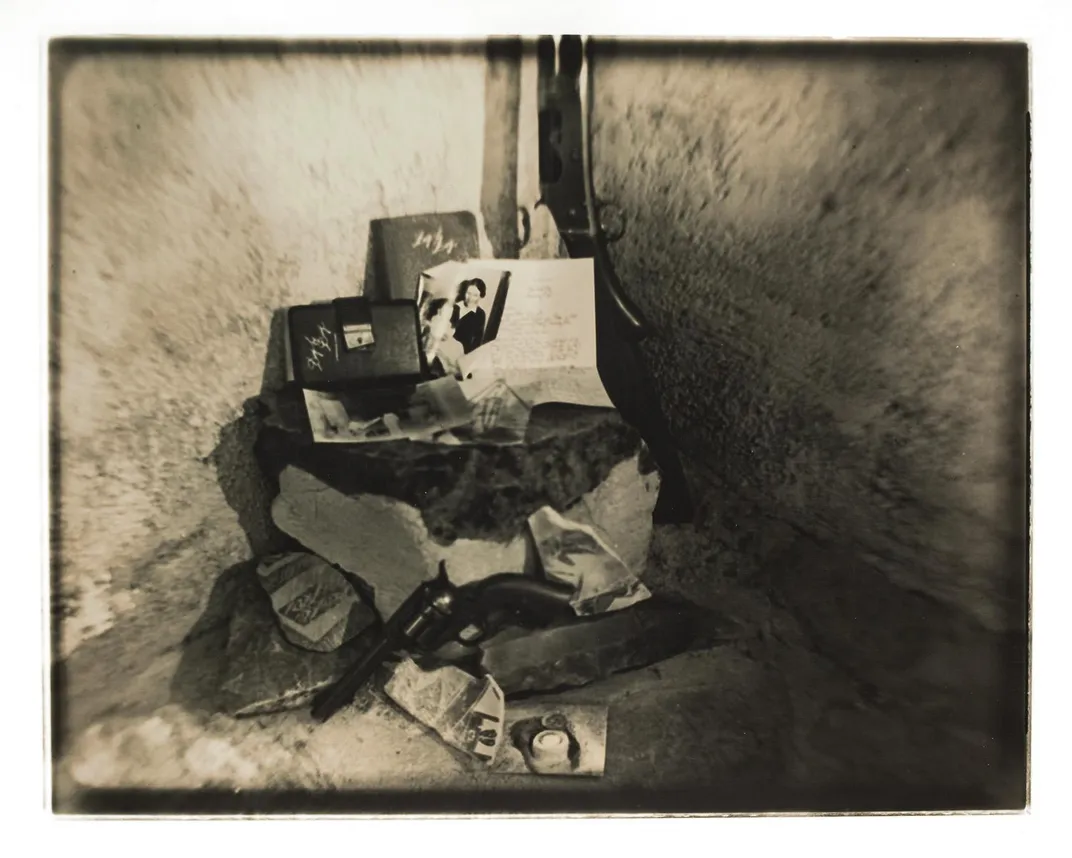
For the rest of the 1920s, the Morrises lived a nomadic existence, dividing their time between the Yucatán and the American Southwest. From the facial expressions and body language that Ann exhibits in the photographs, and the jaunty, high-spirited prose in her books, letters and diaries, it’s clear that she was having a great physical and intellectual adventure with a man she adored. According to Inga Calvin, Ann was drinking heavily—not unusual for a field archaeologist—but still fully functional and relishing her life.
Then, at some point in the 1930s, this bright, vibrant woman turned into a recluse. “It’s the central mystery of her life, and it wasn’t talked about in my family,” says Gell. “When I asked my mother about Ann, she would say, matter-of-factly, ‘She was an alcoholic,’ and change the subject. I’m not denying that Ann was an alcoholic—she definitely was—but I think that’s far too simplistic as an explanation.”
Gell wonders whether settling down in Boulder, Colorado, and having children—his mother Elizabeth Ann was born in 1932, and Sarah Lane in 1933—was a difficult transition after those adventuresome years on the cutting edge of archaeology. Inga Calvin states flatly, “It was hell. For Ann and her children, who were afraid of her.” Yet there are also accounts of Ann throwing marvelous costumed parties for the children at the house in Boulder.
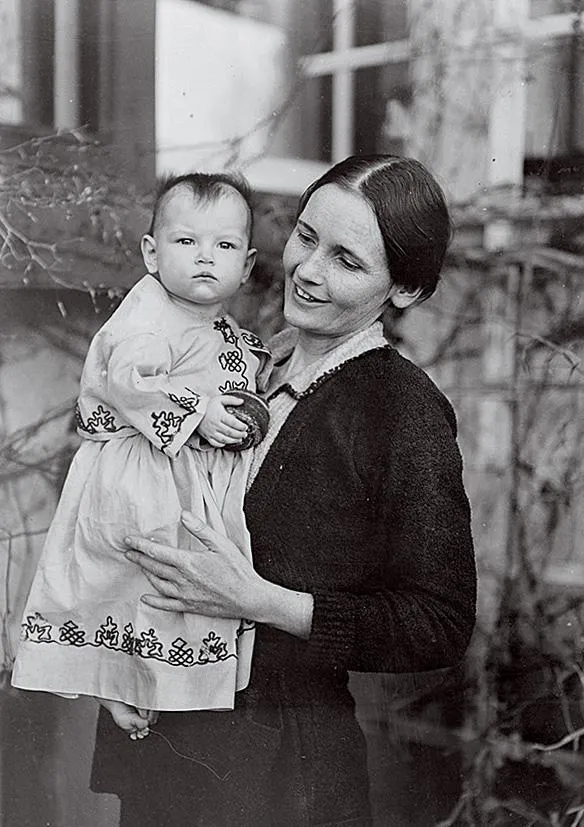
By the time she was 40, she seldom left her upstairs room. According to one family account, she would come downstairs twice a year to see her children, and her room was strictly off limits. There were syringes and a Bunsen burner in that room, which have led some family members to speculate that she was using morphine or heroin. Gell doesn’t think that’s true. Ann had diabetes and was injecting insulin, he says, and maybe the Bunsen burner was for heating water for coffee or tea.
“I think it was a combination of factors,” he says. “She was alcoholic, diabetic, severely arthritic and almost certainly depressed.” Toward the end of her life, Earl wrote a letter to Ann’s father about an X-ray the doctors had done, showing white nodules “like the tail of a comet wrapped around her spine.” Gell assumes the nodules were tumors, and that the pain was bad.
* * *
Coerte Voorhees wanted to shoot all his Canyon de Chelly and Canyon del Muerto scenes at the authentic locations in Arizona, but for financial reasons he had to shoot most of them elsewhere. The state of New Mexico, where he and his crew are based, offers generous tax incentives for in-state film productions, and Arizona offers no incentives.
This meant that a double for Canyon de Chelly National Monument had to be found in New Mexico. After extensive scouting, he decided to shoot at Red Rock Park, outside Gallup. The scenery is on a much smaller scale, but it’s made of the same red sandstone, eroded by the wind into similar forms, and contrary to popular belief, the camera is an excellent liar.
At Red Rock, the crew worked late into the night with uncooperative horses in rain and wind that turned to slanting snow. Now it is mid-morning, with snow flurries still whipping across the high desert, and Lawrie—sure enough, the living image of Ann Morris—is rehearsing her Navajo lines with Taft Blackhorse and his son Sheldon.
During a break, I ask Lawrie how she prepared for the role of Ann Morris. “I read her books, she’s a brilliant writer and a lot of her personality comes through,” she says. “I tried to research her, but there’s barely any information online, which seems extraordinary. I had a long Zoom call with her grandson Ben, which was really helpful. And I have my accent coaches—one for Ann’s Nebraska accent, which is very flat like the land there, and Taft and Sheldon for the Navajo, which is really difficult.”
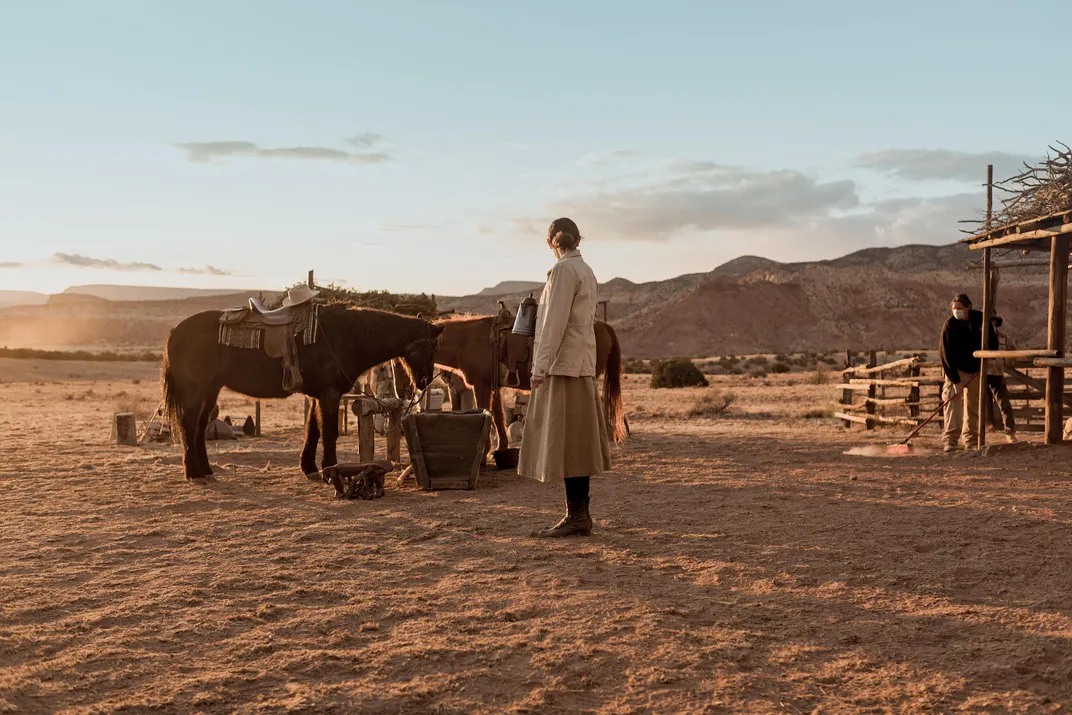
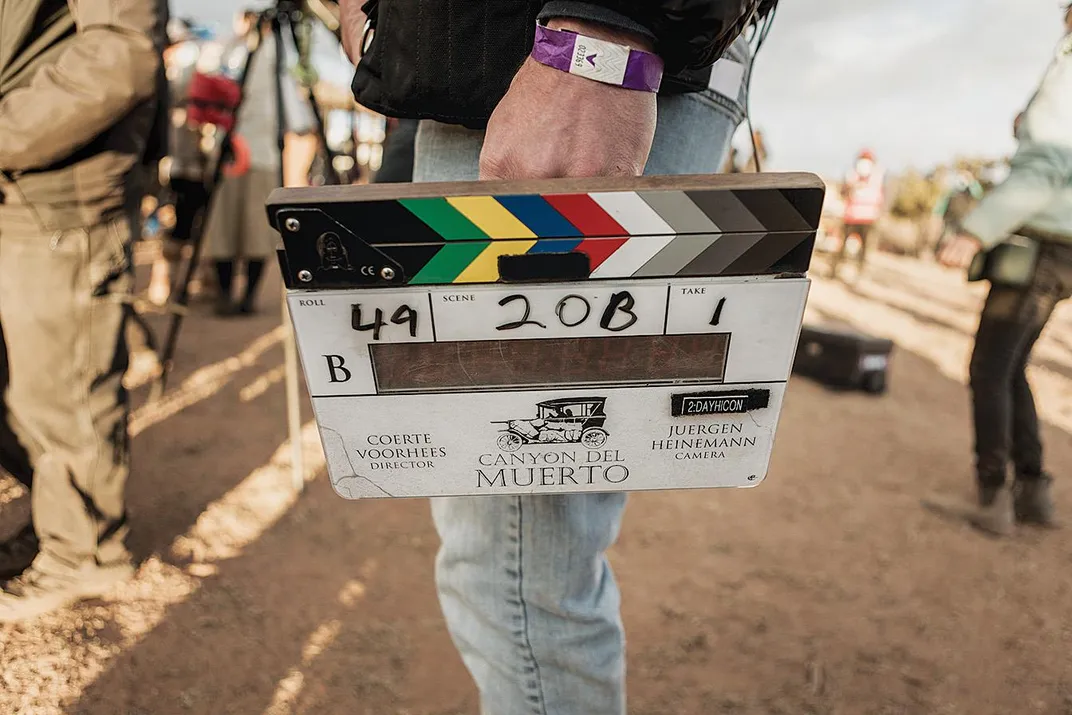
Lawrie finds it tragic that such a brilliant woman ended up in her 40s as a broken, pain-racked alcoholic recluse, and she’s glad the movie doesn’t dwell on that. “We do address her decline, but our film is really a celebration of Ann, so we focus on those amazing years she had in the 1920s,” she says. “And she did have an impact. Those books are out of print now, but they were very influential in their time. Ann was inundated with letters from people who wanted to become archaeologists, and she really paved the way for other women in the field.”
The filmmakers managed to recruit the British actor Ewen Bremner to play the archaeologist Sylvanus Morley, and the great Cherokee actor Wes Studi, who delivers a blistering performance as Tsali, the crew boss on the Morris excavations. Perhaps the greatest casting coup, however, was to persuade Jonathan Nez, the 46-year-old president of the Navajo Nation, to portray the time-traveling incarnation of an Anasazi.
With the weather still bitterly cold and windy, Nez arrives at the set in a black SUV with a small entourage, and ducks into a trailer to get into 1920s period costume with a double layer of thermal underclothes. I asked him why he decided to participate in the movie. “To represent our people and our belief system, which is shown through the scene that I’m going to be part of,” he says. “Ann is sick and we believe the ancient spirits made her sick. If you disturb that negative energy, it comes back on you. That’s what she did when she was excavating. You don’t mess around with this stuff. And she messed around with this stuff.”
For the Diné who know her story, there is no mystery at all to Ann Morris’ sickness and early death. In her excavations at Canyon del Muerto, she broke one of their strongest taboos, with entirely predictable consequences. “You don’t do that,” explains Nez, who studiously avoids using the words “dead” and “death.” “That’s why there are very few Navajo archaeologists.”
Taft Blackhorse is one of them, and after handling dead bodies he goes through a purification ceremony to remove the danger from the spirits. Ron Maldonado, also observing the shoot, was an archaeologist for the Navajo Nation for many years. He is not Navajo, but his wife and children are. To protect them from the chindi (spirits) of the dead bodies he disturbed, he went through a ceremony that required him to spend four days covered in sheep fat and charcoal.
The movie presents the Navajo explanation for Ann Morris’ sickness, and it also presents the Morris family explanation—Ann and her brother were born with weak bones and “the arthritis of the Axtells.”
Ann Morris died in self-imposed solitude at the age of 45, and the official cause of death is unknown. Earl Morris married again, to a schoolteacher, and he never spoke of Ann again. “In my family, we kept her buried under layers of pain and shame and silence,” says Gell. “It was like the Navajo death taboo. Don’t talk about her or something terrible will happen.”
Now, with Ann rescued from obscurity, embodied in her youthful vivaciousness by Abigail Lawrie, and celebrated onscreen by a writer-director who genuinely admires her, Gell hopes that his grandmother will finally get the recognition she deserves. “It’s been an excavation,” he says. “We’ve dug down through the layers of shame and silence. We’ve exposed the prejudice she had to deal with. We’ve brought her out into the light.”
*Editor's Note, 8/23/2021: A previous version of this story misstated several details regarding Coerte Voorhees. He has an MFA degree from the University of Southern California Graduate Film School, not the Summer Program for Film. Although his movie The First Line was released in 2014, Netflix acquired it in 2016. In addition, Ben Gell has stereo equipment made by Bang & Olufsen, a Danish, not Swedish, company.
/https://tf-cmsv2-smithsonianmag-media.s3.amazonaws.com/filer/7d/4e/7d4efdd4-a61c-4fed-960f-9776391286c0/mobile_-_sep2021_f01_annaxtellmorris_copy.jpg)
/https://tf-cmsv2-smithsonianmag-media.s3.amazonaws.com/filer/66/1d/661dcce5-97b6-4b67-84b0-23aa34df86d6/social_-_sep2021_f01_annaxtellmorris_copy_2.jpg)